The European Burmese tortie is an attractive variation of the breed known for its unique multicolored coat. They have a rich blend of two or more colors intermingled in patched areas across their body. No two European Burmese torties will have exactly the same markings.
European Burmese
Breed Type: Asian
Common nicknames: Euro-Burm, Foreign Burmese
Coat: Short-haired
Hypoallergenic: No, they will likely trigger allergies.
Temperament: Friendly, affectionate, playful, energetic
Life expectancy: 10-15 years
Color & patterns: Chocolate

Get ready to be charmed by the European Burmese, a suave cat with a sleek coat and captivating eyes. The European Burmese originates from the royal lineage of Burmese cats, but it’s not just their regal background that defines them; these cats have charismatic personalities and are known for their affectionate nature, always ready to curl up on your lap and shower you with purrs and head boops. They’re social butterflies, forming strong bonds with their human companions and making them excellent family pets. Their playful spirit and engaging personalities ensure there’s never a dull moment in their presence.
European Burmese characteristics
Learn about about European Burmese basics like their fur colors, shedding levels, how much grooming they need, and other European Burmese facts.
Average height
10-12 inches (25.4-30.5cm)
Average weight
6-12 pounds (2.7-5.4 kg)
Average lifespan
10-15 years
Good with other cats
Good with dogs
Affection
Shedding
Health
Exercise needs
What eye colors can a European Burmese have?
European Burmese cats have stunning eyes that range in color from yellow-gold to dark amber.
What color coats can European Burmese cats have?
European Burmese cats come in 10 colors, including rich brown, milky chocolate, blue, lilac, red, and cream. They have a wider variety of coat colors than American Burmese cats.
How big do European Burmese cats get?
European Burmese cats are considered medium-sized. Most European Burmese weigh between six and 12 pounds and stand between 10 and 12 inches tall.
How long do European Burmese cats live?
European Burmese cats, with proper care, can have a lifespan of 10 to 17 years. Many factors can influence a cat’s lifespan, including diet, exercise, and preventative veterinary care.
What is the difference between the Burmese and the European Burmese?
The biggest difference between Burmese and European Burmese is that the Europeans have a more moderate body and head type.
When does a European Burmese stop growing?
European Burmese, like most cat breeds, stop growing between two and three years old, but their bodies can continue to develop and fill out for a couple more years.
European Burmese health
Learn about about the European Burmese health outlook and what diseases they may be prone to at various stages of their life.
Why can’t European Burmese cats go outside?
The American Veterinarian Medical Association recommends that all cats be kept indoors. They’re small and vulnerable to predators, cars, and even getting lost or stolen. To keep them happy and safe, provide indoor enrichment with toys and climbing structures, or consider leash training or a secure outdoor enclosure.
Do European Burmese cats shed?
Yes, European Burmese cats shed, but they are fairly light shedders. Their short, soft, silky coat means less fur is floating around your home. While they still shed some fur, regular brushing can help minimize shedding and keep their coat healthy.
Do you need to groom a European Burmese cat?
Yes, you need to groom a European Burmese cat, but they require very little grooming. Brushing them once a week in your lap will keep the coat looking healthy and the cat feeling snuggled. In addition to brushing, all cats should have their claws trimmed every two weeks or so. Cats are also prone to periodontal disease and should have their teeth brushed two to three times a week.
Are European Burmese cats hypoallergenic?
No, European Burmese cats are not hypoallergenic. Cat allergies are primarily caused by a protein (Fel d 1) found in cat saliva, dander (dead skin flakes), and urine. These allergens can become airborne and trigger allergy symptoms. If you have allergies but love cats, consult a doctor to discuss allergy management strategies and potentially getting allergy shots.
Are European Burmese cats healthy?
Yes, European Burmese are healthy cats with some genetic predispositions to be aware of, including:
Diabetes mellitus: European Burmese are prone to diabetes mellitus. Diabetes is a complex disease that prevents the body from properly regulating blood sugar levels. It is caused either by a lack of the hormone insulin or an inadequate response to insulin. Insulin allows the body to use glucose (sugar) for energy or to store for later use. Improper insulin levels will cause excessive urination and thirst, increased appetite, cataracts and weight loss. Though Diabetes is a serious illness, it can be controlled by diet and insulin medication.
Cranial deformities: European Burmese are prone to cranial deformities due to their short muzzle.
Corneal dermoids: Corneal dermoids are a rare congenital defect where small patches of hair and skin are attached to the cornea. They can affect a cat’s vision and require surgical removal in some cases.
Glaucoma: An eye disease that causes excessive pressure on the eye, damages the optic nerve, and eventually leads to vision loss and blindness.
Breathing difficulties: Due to their short muzzle, brachycephalic cats may have shorter nasal passages and potentially smaller airways, which can lead to breathing issues.
European Burmese history
Learn about where this European Burmese came from!
Where are European Burmese cats from?
European Burmese cats originate in England. In 1930, Dr. Joseph Thompson brought a cat from Burma (now Myanmar) to San Francisco, who reminded him of all the cats he was so fond of while working in Tibet. He enlisted the help of geneticists and breeders to develop this breed by crossing the Burmese cat with a Siamese cat, creating the American Burmese. In 1949, a pair of American Burmese cats were imported to England, and breeding programs began in earnest across the pond to create the European Burmese.
European Burmese temperament
Learn about about the European Burmese temperament and how well they fit into your lifestyle, home environment, and family.
Do European Burmese cats meow?
Yes, European Burmese meow. They easily communicate their feelings, needs, and desires to their pet parents. They also have a unique vocality with a raspy timbre to their voice.
Are European Burmese cats friendly?
Yes, European Burmese are incredibly friendly cats and incredibly people-oriented all around, basking in human attention and affection.
Are European Burmese cats good with other cats?
Yes, European Burmese cats are good with other cats. They are incredibly playful, active cats who can enjoy the company of other cats quite well. European Burmese are adaptable cats and can adjust to living with other felines, but proper introductions are crucial.
Are European Burmese cats good with dogs?
Yes, European Burmese cats can be good with other dogs. They are often described as “dog-like” in their playful, affectionate, sociable tendencies, making them a good choice for multi-pet households with canine companions. A slow and supervised introduction is crucial for success. Start with separate spaces and gradually allow them to get used to each other’s scents and presence.
Are European Burmese cats good hunters?
Yes, European Burmese cats can be good hunters. They possess strong predatory instincts inherited from their wild ancestors, which include stalking, chasing, and pouncing on prey.
Are European Burmese cats snuggly?
Yes, Burmese cats are snuggly. There is little the European Burmese loves more than a warm lap snuggle. Well, maybe dinner, but a lap snuggle is a close second.
Are European Burmese cats active?
Yes, European Burmese cats are active. Their affectionate nature is rivaled only by their youthful and playful disposition. They love to perform for an audience and will show off their agile leaps and bounds to their adoring crowd (you). They also love a good game of fetch. Moreover, they love food.
Do European Burmese cats like being picked up?
Yes, Burmese cats are very affectionate and likely appreciate being picked up. However, it’s important to be gentle and supportive when picking up any cat. Always prioritize their comfort and respect their body language.
Are European Burmese cats good pets?
Yes, European Burmese cats can make excellent pets for many people. They can do well in various living situations, though they might not be ideal for constantly empty homes. European Burmese can even be trained with patience and positive reinforcement.
Find European Burmese kittens near you
Adopting an European Burmese
We don't see any European Burmese available for adoption in your exact location or cities near you, but here are some adorable similar breeds in Columbus, OH.
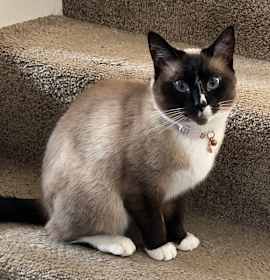
Freya
American Shorthair
Female, adult
Reynoldsburg, OH
Not good with dogs
Not good with cats
Needs experienced adopter
House-trained
Spayed or Neutered
Shots are up-to-date
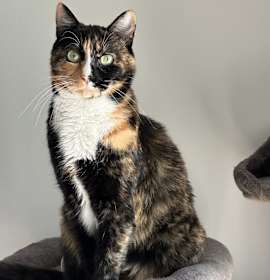
Java
American Shorthair
Female, adult
Columbus, OH
Not good with dogs
Good with cats
Needs experienced adopter
House-trained
Spayed or Neutered

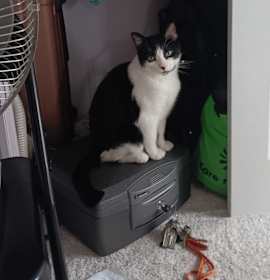
Dominick
American Shorthair
Male, young
Columbus, OH
Not good with dogs
Not good with cats
Needs special attention
Needs experienced adopter
House-trained
Spayed or Neutered
Shots are up-to-date
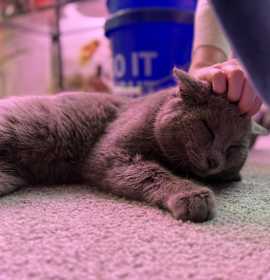
CT
American Shorthair
Male, adult
Columbus, OH
Good with dogs
Good with cats
House-trained
Spayed or Neutered
Shots are up-to-date

Jinx
British Shorthair
Female, young
Columbus, OH
Not good with dogs
Good with cats
House-trained
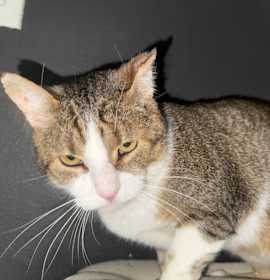
Gus
British Shorthair
Male, adult
Columbus, OH
Not good with dogs
Not good with cats
House-trained
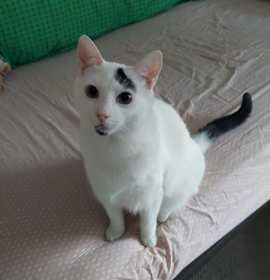
Bingus (bonded to Sunshine)
American Shorthair
Male, adult
Columbus, OH
Good with dogs
Good with cats
House-trained
Spayed or Neutered
Shots are up-to-date
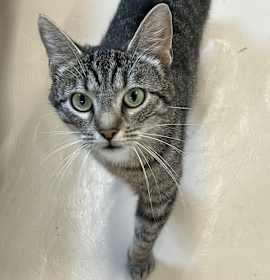
Kleya
American Shorthair
Female, 1 yr 4 mos
Delaware, OH
Not good with dogs
Good with cats
Spayed or Neutered

Freya
American Shorthair
Female, adult
Reynoldsburg, OH
Not good with dogs
Not good with cats
Needs experienced adopter
House-trained
Spayed or Neutered
Shots are up-to-date

Java
American Shorthair
Female, adult
Columbus, OH
Not good with dogs
Good with cats
Needs experienced adopter
House-trained
Spayed or Neutered


Dominick
American Shorthair
Male, young
Columbus, OH
Not good with dogs
Not good with cats
Needs special attention
Needs experienced adopter
House-trained
Spayed or Neutered
Shots are up-to-date

CT
American Shorthair
Male, adult
Columbus, OH
Good with dogs
Good with cats
House-trained
Spayed or Neutered
Shots are up-to-date

Jinx
British Shorthair
Female, young
Columbus, OH
Not good with dogs
Good with cats
House-trained

Gus
British Shorthair
Male, adult
Columbus, OH
Not good with dogs
Not good with cats
House-trained



